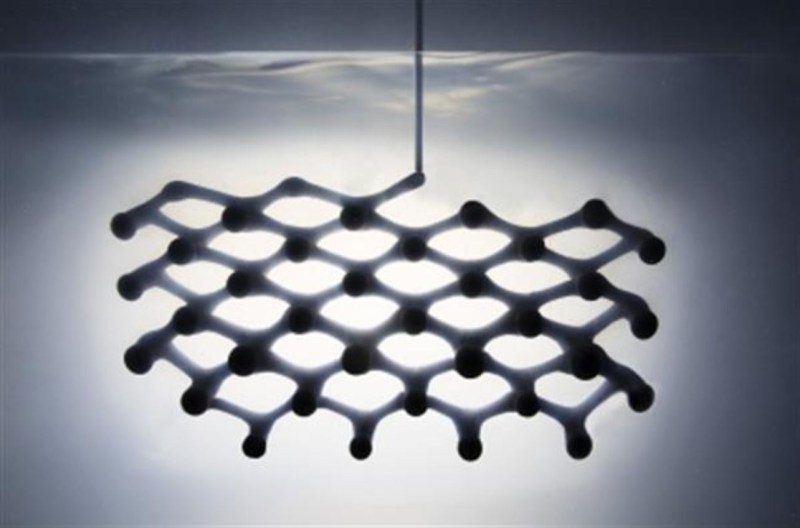If print supports have ever caused you grief, know that there’s an alternate printing method in the works. First: get yourself a vat of industrial gel in which to print.
Rapid Liquid Printing(RLP) is being developed in collaboration by Michigan-based company [Steelcase] and [Skylar Tibbits’] Self Assembly Lab at MIT. RLP is touting advantages over traditional 3D printing technology such as reduced print times, a higher quality print, and enabling larger scale prints — all without supports!
Working with rubber, plastic, or foam, the printing material is injected by nozzle into a basin of industrial gel. That gel suspends the print throughout the process without bonding to it and the finished product is simply lifted out of the gel and rinsed off. Shown off at the Design Miami event earlier this month, onlookers could pick up finished lampshades and tote bags after mere minutes.
Now, this could lead to an entirely different set of extrusion issues — but only minutes later at most. The same can be said for another MIT project that continues to push what more conventional 3D printers are capable of.
[Via /r/EngineeringPorn]
















https://www.youtube.com/watch?v=b-sIcYo8isI
Gel acts like a coolant?
More like support.
My concern is that this support gel also being a coolant would make it unlikely for layers to properly fuse.
Why? I don’t think this is a heat fusing method. I think the hardening is a chemical reaction that can take place without air (gel will displace the air). The bonding strength will be dictated by how well the liquid plastic will bond to itself.
Looks like something from the World of Goo video game.
Great project that has a very interesting concept, have just one quibble.
“a higher quality print” It looks like the nozzle produces about a centimeter wide path hardly high resolution.
I know this is generic and maybe kinda lame but …
+1
What he said. I saw the same phrase and then saw the prints and wasn’t blown away by the quality.
I think you missed that they’re using a paste extruder, not an FDM/FFF hot-end, those things tend to be lower resolution, although it does look like they’ve got some control over the extrusion size by altering the flow rate a bit.
Not quite sure about the reduced print time, maybe on objects formed of thick lines suspended in air. But if you were to do it layer by layer at very fine detail like an FDM it would take just as long.
It’s still very early days, maybe it could work someday with a lot of fine tuning, but now it’s just another gimmick to get money off investers who have no idea.
Reminds me a lot of the “FRESH” printing (of tissue-engineering ECM hydrogels) from Feinberg’s group at CMU.
http://advances.sciencemag.org/content/1/9/e1500758.full
Perfect for printing flipflops, or croc like shoes for kids
I was gonna say Schmidt triggers.
I don’t know that this is really adaptable to high resolution prints, but considering there’s already demand for FDM printers with 1 mm (or larger) nozzles, obviously big and low res has a market.
do you know what is the gel and where to source it?
Any Portal-2 store. :-D
If the. Density of the plastic is less than that of the gel, the part will rise to the surface. Also, I can’t see how this technique can be both rapid and high resolution as the wake left by the print nozzle will likely distort the print.
I swear I saw this years ago …
Me too: https://www.youtube.com/watch?v=msRZJyceXBw